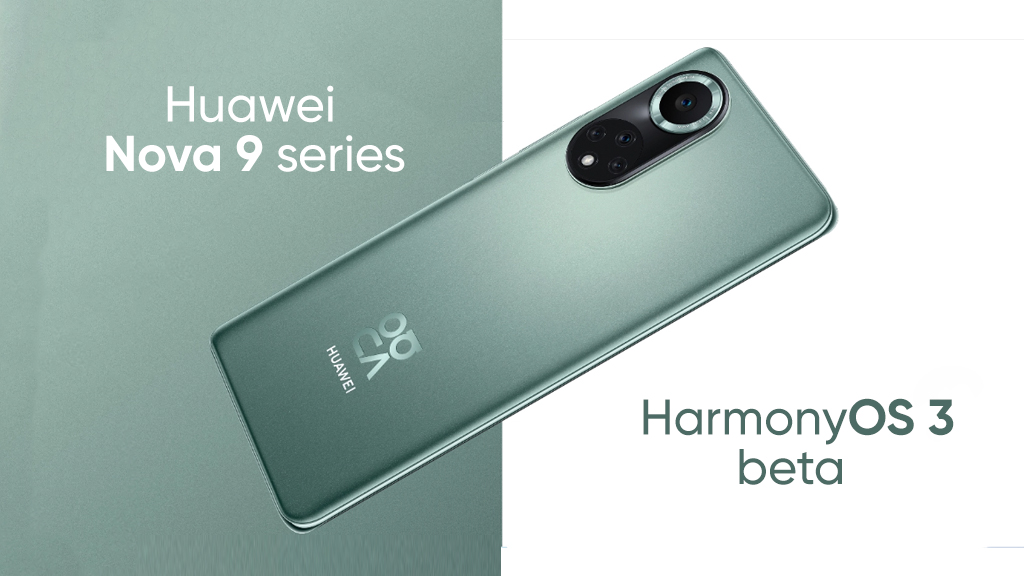HarmonyOS
HarmonyOS 3 beta is live for Huawei Nova 9 series

HarmonyOS 3 beta is now available for the Huawei Nova 9 series users, it helps to create a fully immerse digital world that is suited to your needs. Also, provide authentic customized features for efficient functioning.
Notably, Huawei Nova 9 and Nova 9 Pro jumped from the August 2022 system optimization update to HarmonyOS 3 beta version. In short, if your device is running over the HarmonyOS 2.0.1.262 build then your device is eligible to update over HarmonyOS 3.0.0.116 beta.
Here’s what changes you find after updating:
The HarmonyOS desktop can be customized more, and the smart desktop layout can be produced with just one click. It also has universal card stacking storage and the ability to create large or tiny smart folders.
The super terminal will be fully enlarged, with more devices and flexible combination options, privacy security is further improved, the device security status is more transparent and controllable, and data protection is easier and more secure.
When it comes to bridging the gap between devices, its wish is its command thanks to easy-to-use service widgets and smooth interactions.
Check the changelog below in detail:
Adopted models:
Huawei Nova 9 (NAM-AL00)
Huawei Nova 9 Pro (RTE-AL00)

New Interaction
Service widgets, change freely:
- Stackable: You can drag cards of the same size to form a stacking state, you can slide up and down to view the widgets or pull down and then slide left to delete, or drag to adjust.
- Combinable: Cards of different sizes and application shortcuts can be sorted at will, and freely combined into a widget, the combined card supports resizing, or a combined template can be applied with one click.
- Smart folders: These can be large or small There are more sizes and styles, and you can also adjust the size by long-pressing the folder. No matter how many or few applications are used, you can always find a suitable way to store them and use them more efficiently.
- Home Screen space: Smart home screen layout and personality are so simple: Pinch the home screen to intelligently layout the home screen, classify applications and widgets by color and function, and automatically generate a personalized home screen by one-click selection.
- Celia Suggestions, Extraordinary: Celia Suggestions continue to upgrade wisdom, and can dynamically recommend services or applications by sensing time, scene, location, and usage habits, bringing you a convenient experience that saves time and effort.
Smart life in all scenarios
- Super Device, more experience: Super Device is fully expanded to support more types of devices. Various devices can be flexibly combined, interconnected, and coordinated, and devices with different HUAWEI IDs can also be quickly interconnected so that the advantages of each device can be freely invoked.
- Broadcast control center, broadcast control is more convenient: Added support for connecting two pairs of Bluetooth headsets at the same time, one song, two people can enjoy, and listen to the beauty together. In addition, it brings a multi-device remote control function. Consequently, this can easily control the music playback of nearby speakers through the broadcast control center of the mobile phone (currently only some headphones and speakers).
Performance power consumption
- Super Frame Game Engine: It upgrades the superframe game engine according. As a result, it reduces energy consumption by intelligently scheduling CPU and memory resources.
Privacy & security:
- Privacy Center: Provide you with a general dashboard of all application permission behaviors, and proactively provide privacy protection suggestions for possible risks.
- Security Center: You can check the security status of the current device or other devices with the same HUAWEI ID at any time, proactively help you identify problems, and provide protection suggestions, making device security easier.
Barrier-free experience
- Visual Aid: Added image description, text recognition, and other functions, which can inform the features and positions of people or objects recognized in the scene. Further, the text content recognizes in the reading environment and describes the people appearing in the camera lens through voice broadcast.
- Hearing Aid: Added vocal enhancement function to tune the sound by enhancing the clarity of human voices in the environment, calls, as well as media to make the sound heard more clearly. Supports quick connection with hearing aids, can quickly discover nearby hearing aids via Bluetooth, and Easy pairing and connection.







